Considering History: Mexican Americans as Political Prop in the 20th and 21st Centuries
This series by American studies professor Ben Railton explores the connections between America’s past and present.
As I discussed in my last column, when the Mexican-American border began to be patrolled in the early 1900s, the explicit and sole focus was on the only immigrants defined as “illegal” during that era: first Chinese and eventually most Asian arrivals to the United States. When the Immigration Act of 1924 extended those limitations and exclusions, additional nationalities became targets for the newly formalized Border Patrol. But arrivals from the Western Hemisphere were overtly exempt from that law, meaning that Mexicans and other Central and South Americans could still cross the border more freely (and U.S. residents could likewise cross to Mexico with ease).
All that would soon change, however. Beginning in the 1920s, and continuing throughout the 20th and into the 21st centuries, debates over the Mexican-American border would shift significantly, focusing on arrivals from Mexico and other Latin American nations. Moreover, those debates and the resulting policies have consistently fluctuated between xenophobic fears of Hispanic arrivals and cynical attempts to capitalize on them as a labor force, leaving the immigrant individuals, families, and communities themselves too often outside of these conversations.
A 1928 speech on the House floor from Texas Congressman John Box exemplified the shift to anti-Latin-American narratives. Arguing that the new national quotas should be amended to include Mexico and other Western Hemisphere nations, Box thundered, “Every reason which calls for the exclusion of the most wretched, ignorant, dirty, diseased, and degraded people of Europe or Asia demands that the illiterate, unclean, peonized masses moving this way from Mexico be stopped at the border.” Box went further, elucidating a number of the xenophobic stereotypes that have become standard fare for anti-immigrant arguments:
Another purpose of the immigration laws is the protection of American racial stock from further degradation or change through mongrelization. … This blend of low-grade Spaniard, peonized Indian, and Negro slave mixes with Negroes, mulattoes, and other mongrels, and some sorry whites, already here. The prevention of such mongrelization and the degradation it causes is one of the purposes of our laws which the admission of these people will tend to defeat. … To keep out the illiterate and the diseased is another essential part of the Nation’s immigration policy. The Mexican peons are illiterate and ignorant. Because of their unsanitary habits and living conditions and their vices they are especially subject to smallpox, venereal diseases, tuberculosis, and other dangerous contagions. Their admission is inconsistent with this phase of our policy. … The protection of American society against the importation of crime and pauperism is yet another object of these laws. Few, if any, other immigrants have brought us so large a proportion of criminals and paupers as have the Mexican peons.
Box’s xenophobic and nativist narratives were taken up by a number of prominent cultural voices, including a contributor to the Saturday Evening Post. In a series of 1929 and 1930 articles, including “We Must Be on Our Guard” and “The Mexican Invasion,” anti-immigration activist Roy L. Garis extended Box’s cases for excluding Mexican arrivals and expelling Mexican Americans. Inspired by such cultural fears, and galvanized by the Great Depression and its accompanying economic and labor crises, in late 1929 President Herbert Hoover launched the Mexican Repatriation program. By 1936 at least half a million Mexican Americans (a majority of them birthright citizens) had been deported to Mexico; some scholarly estimates place the number as high as two million. At least 10,000 per year would continue to be deported until the program’s 1940 conclusion.
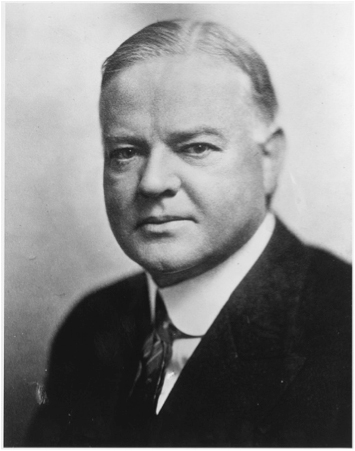
Just two years later, however, with the Depression over and World War II underway, the United States desperately needed additional labor forces, and the pendulum swung once more. On August 4th, 1942, the U.S. signed the Mexican Farm Labor Agreement with Mexico, creating the Bracero (“manual laborer”) Program through which Mexican laborers were guaranteed the chance to enter the U.S. and certain basic protections such as food, shelter, and a minimum wage of 30 cents per hour. The program was extended and amplified by the 1951 Migrant Labor Agreement, and by its end in 1964, an average of 200,000 braceros were being brought to the U.S. per year. Yet these arrivals not only had no ability to advocate for their own rights as laborers (attempts at action such as a 1943 strike alongside Japanese workers in Dayton, Washington were ruthlessly squashed), but likewise were offered no chance of becoming permanent residents or American citizens.
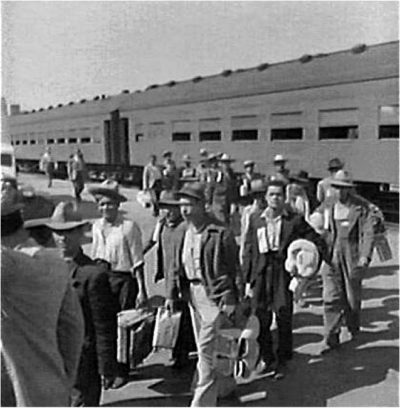
Even during this era of heightened need for and importation of Mexican laborers, continued anti-Mexican sentiments and fears of “illegal” immigrants produced xenophobic federal policies. The most extreme of these was 1954’s Operation Wetback, a policy initiated by President Eisenhower’s new Immigration and Naturalization Service (INS) Commissioner Joseph Swing. Swing was a former World War II general who had fought against Pancho Villa during the 1916 “Mexican Punitive Expedition,” and he created Operation Wetback in an attempt to drastically enhance border patrols and amplify the number of deportations of Mexican Americans. In 1954 alone the program produced more than 1 million “returns,” defined as “confirmed movement of an inadmissible or deportable alien out of the United States not based on an order of removal.” Although deportations did not continue at that level, and indeed were countered by additional arrivals throughout the period, Swing’s program exemplified the continued presence of anti-Mexican sentiments even in the Bracero era.
The swings between those kinds of policies and programs, and the concurrent use of Mexican Americans as a political prop, have continued for the last half-century. Just a year after the Bracero Program ended, the Immigration and Naturalization Act of 1965 did away with national quotas, creating instead a system of preferences that aided some Mexican arrivals (those with family connections) but severely limited many others (due to an emphasis on particular kinds of educational and professional backgrounds). As a result of the latter policy, many businesses began relying more and more on undocumented immigrants, a pattern that continued unabated until the 1986 Immigration Reform and Control Act sought to curtail such practices and give some undocumented immigrants a path toward legal status. Needless to say, the issue has in no way been resolved since then, with the failed 2006 Comprehensive Immigration Reform Act as an illustration. That proposed bill attempted to thread the needle, ramping up border security and patrols while offering both new guest worker programs and a path to legal status for undocumented immigrants already in the U.S., but that last provision in particular was viewed by many members of Congress as an “amnesty” and led to the bill’s defeat in the House of Representatives.
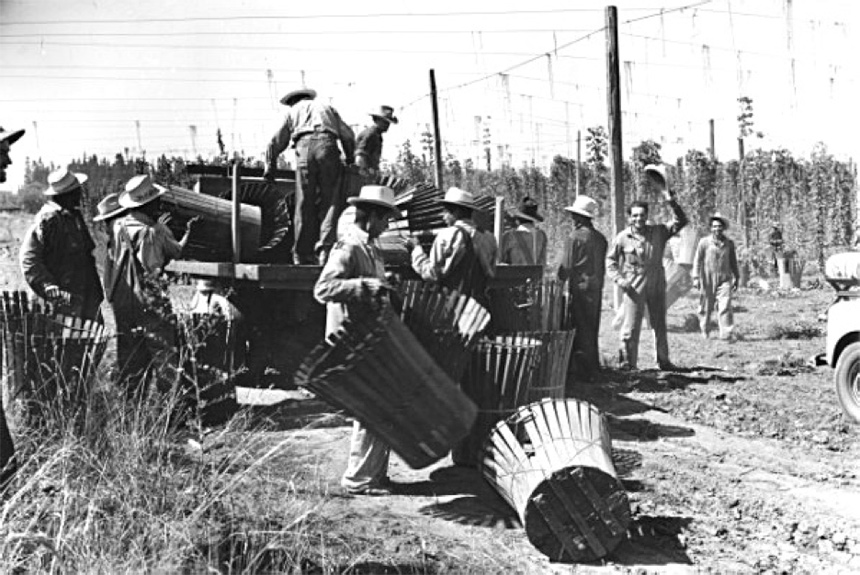
Noteworthy in each of those eras is the absence, or at least minimization, of Mexican- and other Latin-American voices within them. Each of those repatriated Mexican Americans, each of the Braceros, each of those affected by Operation Wetback is not only an individual but a part of families, communities, American identity and history. In an era when Mexican and Latin Americans and the Mexican-American border have once again become a political prop, it is long past time to remember and tell the stories of those individuals and communities. I’ll highlight a few in my third and final post in this series.
Considering History: Myths and Realities of the Mexican-American Border
This series by American studies professor Ben Railton explores the connections between America’s past and present.
The federal government shutdown dominating the headlines as 2019 begins is entirely connected to one specific, controversial issue: America’s southern border with Mexico. Although the question of funding for President Trump’s proposed wall has been the overt focus of the debate, Trump’s Tweeted threat to “close the Southern border entirely” if a deal is not negotiated makes clear just how fully the border itself has become a pawn in this contentious moment.
There are various complex legal and social issues associated with the border, including whether and how arrivals should be able to apply for asylum, what to do with asylum seekers while they are awaiting those decisions, and what role various federal agencies should play in these processes. But as with so many contemporary debates, unless we can better understand the historical realities that underlie our mythic understanding of the Mexican-American border, those current conversations will necessarily be incomplete.
The most foundational such myth is that the border between the two nations has been a consistent, stable entity. It’s an understandable belief, given that Mexico and the United States have established political and geographic boundaries, and the diplomatic relationships that stem from them, in the 21st century. But the earliest histories of the Mexican-American border reveal not only that it was entirely constructed and malleable, but that the contest over where and how it would be defined shaped both national identities and their relationship to one another.
The 1846-48 Mexican-American War centered directly on that border dispute. The Texas Republic had been independent since its 1836 war with Mexico, and in December 1845 the United States annexed Texas and made it the nation’s 28th state. At the same time, newly elected President James Polk was seeking to purchase land from Mexico and to set the border between the two nations significantly farther south, at the Rio Grande river. When Mexico refused these offers, Polk disregarded Mexican sovereignty and borders, moving U.S. troops into the Mexican region known as the Nueces Strip. Farther west, Polk sent explorer John Frémont and a group of armed men into the Mexican province of Alta California, where Frémont raised an American flag over his fort on Gavilan Peak. Mexico responded predictably to these overt intrusions into its territories, moving its own forces into the disputed regions and skirmishing there with U.S. troops, and the war between the two nations began.
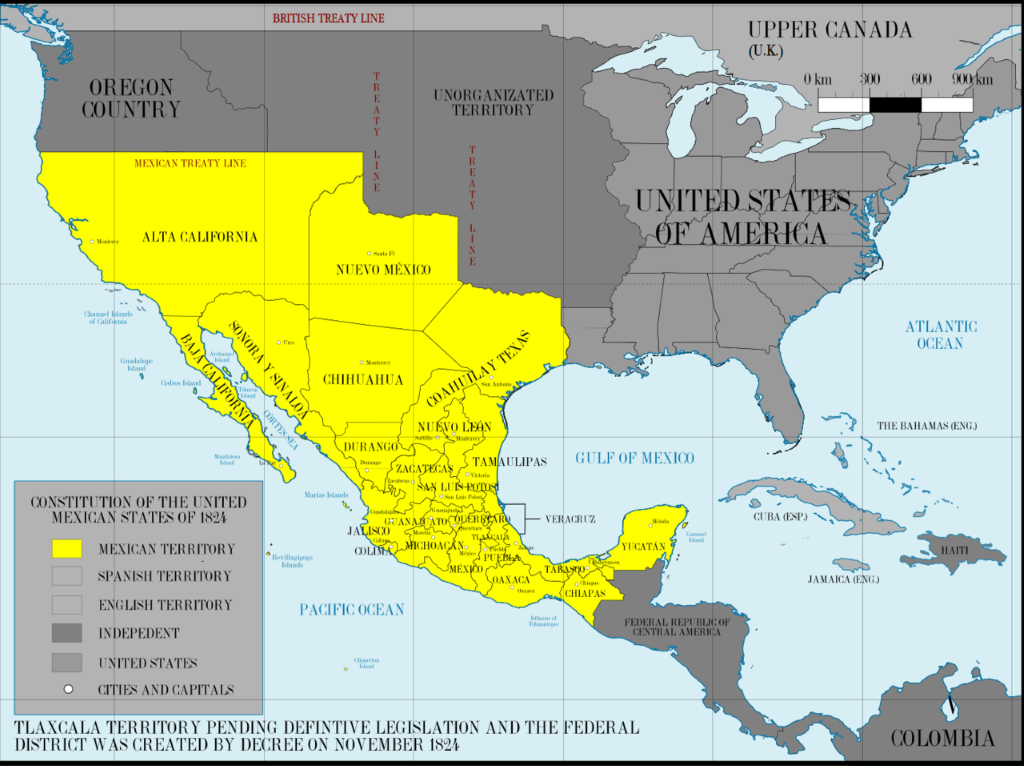
The 1848 Treaty of Guadalupe Hidalgo that cemented the U.S. victory in that war—a treaty negotiated quite literally at gunpoint and without Polk’s knowledge, while U.S. troops were occupying Mexico City—thus did more than cede vast swaths of Southwestern and Western territory to the U.S. It created an entirely new border between the two nations, one in which not only the Nueces Strip and Alta California but much of the rest of the Southwest were suddenly located on the American side. Those areas were still populated by millions of Mexican citizens, however, inhabitants and communities whose ambiguous and fraught new status as Mexican American citizens (a status promised by the treaty, yet highly contested by Anglo settlers) reflected one more layer to the new border’s artificial nature.
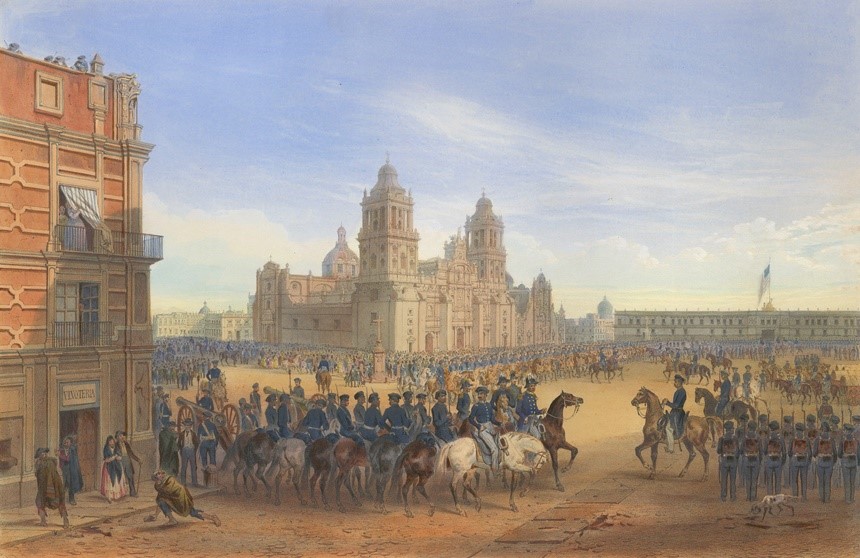
So the Mexican-American border came into existence in a contested, controversial, constructed way that produced communal uncertainty for many decades to follow. Ironically, that border also remained entirely open and unpatrolled. Indeed, for half a century after the treaty, the U.S. maintained no presence of any kind on the border, and residents of both nations (and anyone else who found themselves there) could move freely back and forth across it.
The first federal officials to patrol the Mexican-American border did so in the first decade of the 20th century, and in a very targeted and telling way. Numbering around 50-75 at a time, these “mounted guards” (employees of the Department of Commerce and Labor) operated out of El Paso and were tasked solely with watching for Chinese immigrants, the only arrivals defined as illegal in the era. When Congress formalized the guards in the aftermath of the discriminatory Immigration Act of 1917, they likewise emphasized their role in watching for the Asian arrivals (now including many nations within an “Asiatic Barred Zone”). From the outset, these guards existed not to enforce the border and its rules for all arrivals, but to target particular communities defined as undesirable under a bigoted legal system.
It is thus no coincidence that the U.S. Border Patrol was created as an agency within the Department of Labor in 1924, the same year of the Immigration Act of 1924 (also known as the Johnson-Reed Act), which established discriminatory national quotas that affected most arrivals to the United States. These border guards continued to serve in a targeted role, looking for arrivals within those affected national categories (and, at the Canadian border in particular, for illegal alcohol smuggling under Prohibition). Moreover, since nations in the Western Hemisphere were originally exempt from the 1924 law’s quota system, Mexicans (for example) could continue to move freely across the border and into the United States, reflecting just how arbitrary the power of both the border patrol and the border itself were.
Immigration laws and realities have evolved greatly in the century since those 1924 laws; now it is Western Hemisphere arrivals who are most consistently restricted by our immigration categories and preferences, and thus most often targeted by the border patrol. These contemporary laws represent an unfolding legacy of the contested history of the Mexican-American border, a history that belies many of our myths and likewise demands deeper understanding and engagement.